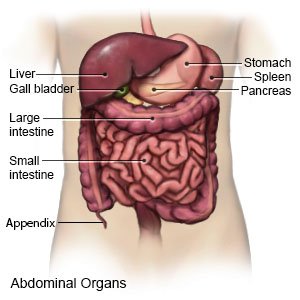Pancreaticoduodenectomy
Medically reviewed by Drugs.com. Last updated on May 6, 2024.
What do I need to know about a pancreaticoduodenectomy?
Pancreaticoduodenectomy is surgery to remove the head of your pancreas, your duodenum, the end of your bile duct, and your gallbladder. Part of your stomach may also be removed. The surgery is also called a Whipple procedure. This surgery is done when a cancerous tumor has been found in the head of your pancreas. The tumor may also be at the place where your bile duct and pancreatic duct meet, or the first part of your duodenum.
 |
How do I prepare for surgery?
- Your surgeon will talk to you about how to prepare. He or she may tell you not to eat or drink anything after midnight on the day of your surgery. Arrange to have someone drive you home when you are discharged from the hospital.
- Tell your surgeon about all medicines you currently take. Be sure to include medicines such as aspirin, ibuprofen, or blood thinners. He or she will tell you if you need to stop any medicine for surgery, and when to stop. He or she will tell you which medicines to take or not take on the day of surgery.
What will happen during surgery?
- Your surgeon will make an incision in your abdomen. He or she will remove the parts of your pancreas and bile duct, your duodenum, and your gallbladder. Part of your stomach may also be removed. He or she will then reconnect your stomach, pancreas, bile duct, and jejunum.
- A feeding tube may be inserted into your intestines. A drain may be placed to remove extra blood or fluid from the surgery area. Your incision will be closed with stitches or surgical tape and covered with bandages.
What are the risks of surgery?
Surgery may damage your pancreas, stomach, small intestines, and other organs, blood vessels, or nerves. It may increase your risk for bleeding or an infection. Bile and other digestive juices may leak into your abdomen. You may have trouble absorbing food and nutrients after your surgery. A fistula (abnormal connection between organs) may form. You may develop diabetes. Even after surgery, the tumor may spread. You may develop a life-threatening blood clot.
Care Agreement
You have the right to help plan your care. Learn about your health condition and how it may be treated. Discuss treatment options with your healthcare providers to decide what care you want to receive. You always have the right to refuse treatment. The above information is an educational aid only. It is not intended as medical advice for individual conditions or treatments. Talk to your doctor, nurse or pharmacist before following any medical regimen to see if it is safe and effective for you.© Copyright Merative 2024 Information is for End User's use only and may not be sold, redistributed or otherwise used for commercial purposes.
Further information
Always consult your healthcare provider to ensure the information displayed on this page applies to your personal circumstances.
